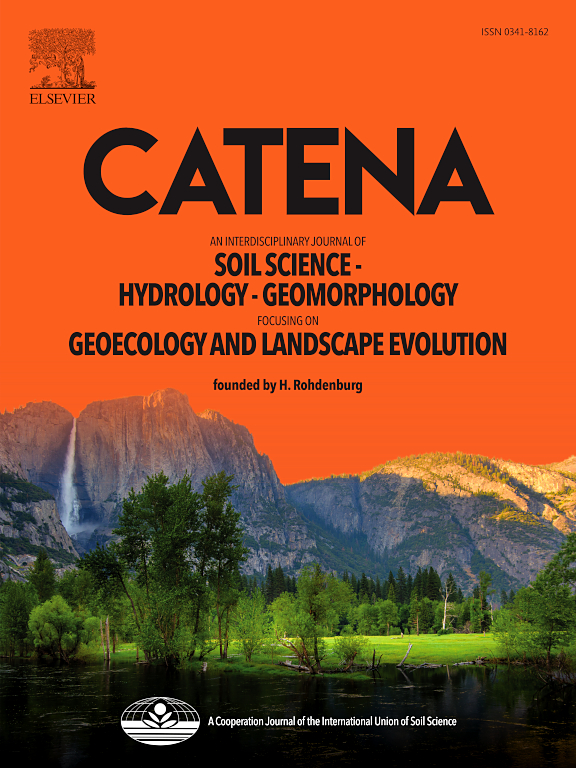Holocene vegetation and soil changes in the driest region of caatinga dry forest – phytolith contribution
IF 5.4
1区 农林科学
Q1 GEOSCIENCES, MULTIDISCIPLINARY
引用次数: 0
Abstract
This study investigates Holocene environmental changes in the driest region of the Caatinga dry forest, using a multiproxy approach integrating phytolith analysis, isotopic data (δ13C, δ15N), radiocarbon dating, and comparisons with regional paleoenvironmental records. Three soil profiles from the Borborema Plateau were analyzed to study the vegetation dynamics (time and space) and soil formation processes. Three distinct environmental moments (EM) were identified since the last approximately 8 cal kyr BP, marking transitions from humid to semiarid conditions in the study area. EM I (before 3.5–2.7 cal kyr BP) represents the wettest phase, with a predominance of C3 plants and increased soil organic matter accumulation. EM II (2.7–1.1 cal kyr BP) marks a drier phase, with the expansion of C4 grasses and reduced tree cover, signaling the establishment of Caatinga vegetation. EM III (1.1 cal kyr BP–present) indicates environmental stabilization, with vegetation and soil characteristics resembling current conditions. The findings highlight the role of climate fluctuations, sedimentary processes, and soil development in shaping the present-day Caatinga, reinforcing the importance of local landscape features in moisture retention. These results contribute to understanding the long-term environmental history of the region and its implications for vegetation resilience and land-use strategies in semiarid environments.
卡廷加干旱林干旱区全新世植被与土壤变化——植物岩贡献
本文采用植物岩分析、同位素数据(δ13C、δ15N)、放射性碳测年以及与区域古环境记录的对比等多指标方法,研究了卡廷加干旱林全新世最干旱地区的环境变化。通过对Borborema高原3个土壤剖面的分析,研究了植被动态(时空)和土壤形成过程。在过去的大约8 calkyr BP中,确定了三个不同的环境时刻(EM),标志着研究区域从湿润到半干旱的转变。EM I(在3.5 ~ 2.7 cal kyr BP之前)为最湿期,C3植物占优势,土壤有机质积累增加。EM II (2.7 ~ 1.1 cal kyr BP)标志着干旱期,C4草类扩张,树木覆盖减少,标志着Caatinga植被的建立。EM III (1.1 cal kyr BP-present)表明环境稳定,植被和土壤特征与当前条件相似。这些发现强调了气候波动、沉积过程和土壤发育在塑造当今Caatinga中的作用,强调了当地景观特征在保持水分方面的重要性。这些结果有助于了解该地区的长期环境历史及其对半干旱环境下植被恢复力和土地利用策略的影响。
本文章由计算机程序翻译,如有差异,请以英文原文为准。
求助全文
约1分钟内获得全文
求助全文
来源期刊

Catena
环境科学-地球科学综合
CiteScore
10.50
自引率
9.70%
发文量
816
审稿时长
54 days
期刊介绍:
Catena publishes papers describing original field and laboratory investigations and reviews on geoecology and landscape evolution with emphasis on interdisciplinary aspects of soil science, hydrology and geomorphology. It aims to disseminate new knowledge and foster better understanding of the physical environment, of evolutionary sequences that have resulted in past and current landscapes, and of the natural processes that are likely to determine the fate of our terrestrial environment.
Papers within any one of the above topics are welcome provided they are of sufficiently wide interest and relevance.
 求助内容:
求助内容: 应助结果提醒方式:
应助结果提醒方式:


